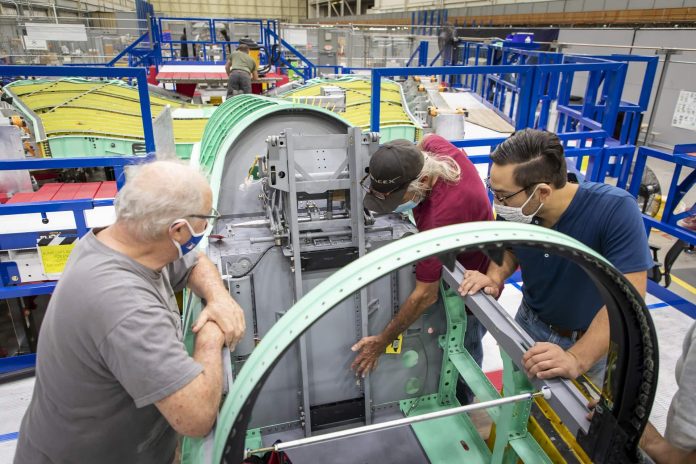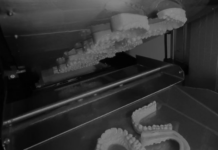NASA has revealed inside the cockpit of the X-59 quiet supersonic research aircraft for the first time as it continues development.
In the photo, taken at Lockheed Martin’s Skunk Works facility where the plane is being assembled, technicians examine the cockpit section.
In this view the camera is looking toward the rear of the aircraft. The yellow-green metal are the wing’s internal structural ribs, while the grey metal in the foreground marks the cockpit’s interior.
An ejection seat from a retired NASA T-38 training jet will eventually be installed in the cockpit along with the airplane’s avionics – including the eXternal Vision System.
The X-59’s eXternal Vision System, or XVS is a forward-facing camera and display system that allows the pilot to see outside the aircraft via augmented reality.
The XVS is NASA’s solution to the aircraft’s lack of a forward-facing window – a result of the need to place the cockpit lower and farther back on the airplane because of its unique, elongated nose and fuselage profile.
The innovative XVS system underwent successful flight tests in August 2019 and passed several rounds of qualification testing in January of this year.
The vertical stabiliser at the back of the plane was recently delivered and unboxed at Skunk Works.
The structure will be placed atop the single F414-GE-100 jet engine to form the X-59’s tail and contribute to the aircraft’s overall height of 14ft.
The F414-GE-100 engine that will power the X-plane was delivered to the Armstrong Flight Research Center in August. Nearly 13ft long, 3ft in diameter, the engine packs 22,000lb of afterburner enhanced jet propulsion.
At the centre it is being checked out and inspected before it is transported to nearby Palmdale for eventual installation into the X-59.
Lockheed Martin is assembling the experimental aircraft for NASA in anticipation of its first flight in mid-2022.
Designed to produce quiet sonic thumps when flying supersonic, the X-59 will be flown over select communities to measure public perception of the sound. Results will be given to regulators to use in determining new rules that could allow commercial faster-than-sound air travel over land.


















































